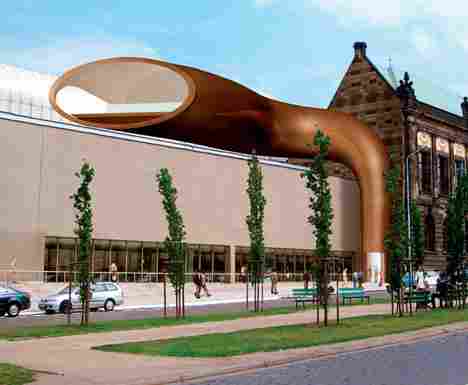The Cube will be a five-star condo hotel, a unique and innovative landmark tower that will occupy a prime location within Dubai Sports City, right in the midst of the future home for the most thrilling sports events taking place all year round. The Cube will consist of 27 stories of generously-sized 561 ultra-modern condo hotel units, with large balconies, unparalleled views and quality finished of the highest possible standards, including use of marble and bright natural stone.
Source: Dubai Properties
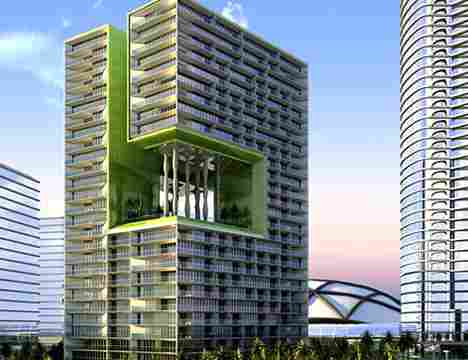
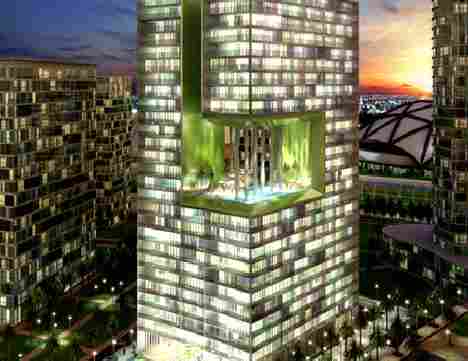
High-security without that prison-feel
UNStudio’s aim in designing the new laboratory and offices for the Japanese pharma-co Astellas in Bio Science Park was security of the scientific research center without sacrificing a pleasant, open working environment. To achieve this, the structure integrates the security concept inclusively with the frame of the building serving as an unconcealed enclosure. At the center is a courtyard surrounded by glass facades that provide sufficient daylight and transparency into each of the 3 work areas.
Security is an essential element in the design of the building, which houses both offices and an ultramodern laboratory for scientific research. Rather than approaching this issue in an exclusive way – by confining and fortifying the structure – the design for the Astellas building integrates the security concept inclusively, with the frame of the building serving as an unconcealed enclosure.
Equally essential to the design of the building is the creation of a pleasant, open and transparent working environment for Astellas employees, in addition to an agreeable and welcoming gesture to their international visitors. The organization and materialization of the building ensures clear views from each of the three areas within the main frame. Glass facades are employed to provide sufficient daylight, whilst also creating open visual communication throughout the structure.
The building frame integrates into one gesture three sections of varying heights, which together encircle an inner courtyard garden. Covering six floors on the west side of the building are the office spaces. A restaurant with a roof terrace is located on the lower floor of this area. The Eastern section of the building houses four floors of laboratories. The main entrance to the building is located on the South East and employs the concept of the hotel lobby to comfortably welcome employees and visitors from home and abroad. The floor to ceiling glass facades and large skylights of the expansive, 3.7 meter high lobby area provide visual links to both the inner garden and the surrounding street life. The Western side of the lobby area houses seating areas and meeting rooms. Direct access to the inner garden, which is based on traditional enclosed Japanese gardens, is possible from all three sections of the building.
Parking is provided at street level to the East of the building and in a sunken parking garage underneath the main structure. The ground floor of the building is raised to a height of 1.7 meters and is accessed by steps which lead to the lobby area from street level. The floor plans in the interior are flexible and based on the campus concept, where emphasis is placed on communication.
Glass and aluminum are the main materials used in the façade of the Astellas building in order to provide a lightweight structure which requires less material usage in its foundations. Lamellas are incorporated on each level of the façade in order to deflect direct sunlight. The glass panes are further coated to additionally reduce heat load to the interior. On the Northern side of the building, where sunlight is less prevalent, floor to ceiling glass is employed, with 4cm deep lamellas. The South and East/West facades respectively are furnished with lamellas with a depth of 30cm and 20cm. Parapets of 90cm are also employed on these facades in order to further reduce direct sunlight penetration. The building as a whole has an 89%-90% net to gross floor ratio, with an underground energy storage system further reducing energy usage. Color is introduced into the façade by means of a vertical variation in the four contrasting tones of the Japanese Manga animation films.
Designer: UNStudio
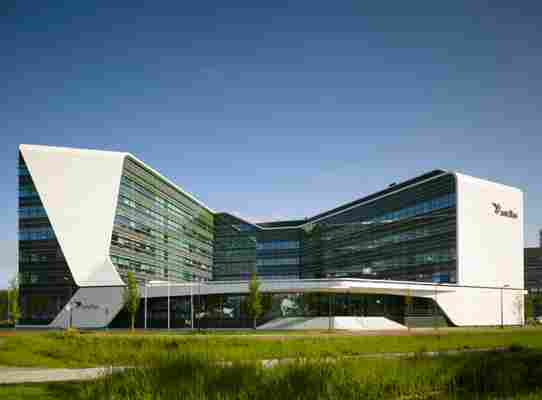
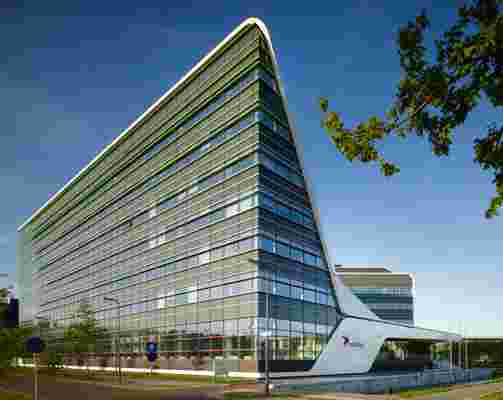
Poznan Museum Extension by Claudio Silvestrin
Poznan’s Modern Art Museum is to get a futuristic, funnel-like roof extension, courtesy of London-based Claudio Silvestrin Architects. Come 2008, the museum, which was built in 1900 and added to in 1976, will boast a new gallery on the top floor, a space previously inaccessible to Poland’s art lovers. The configuration is intended to be a statement of contemporary and future architecture.
Architect: Claudio Silvestrin
